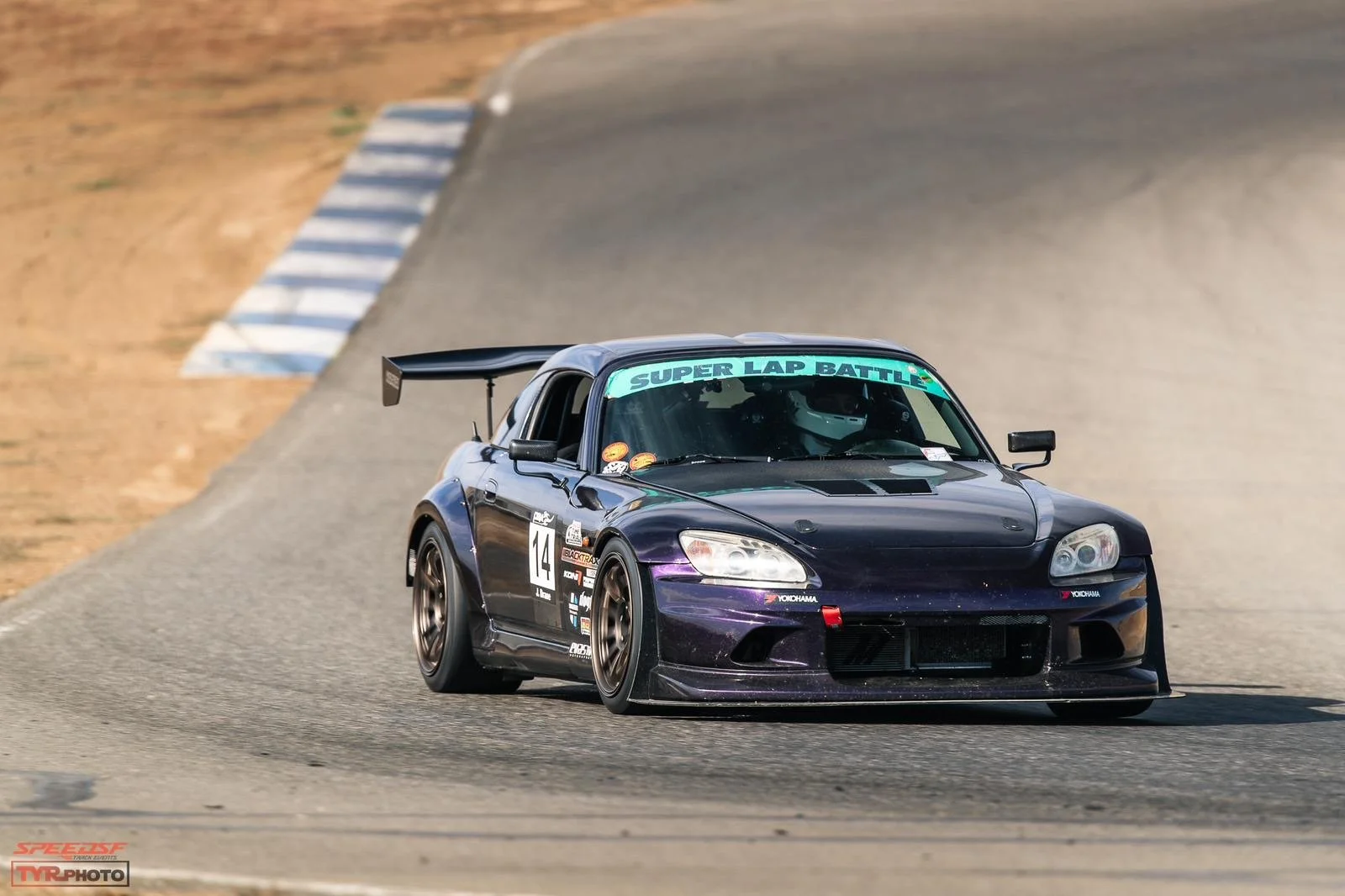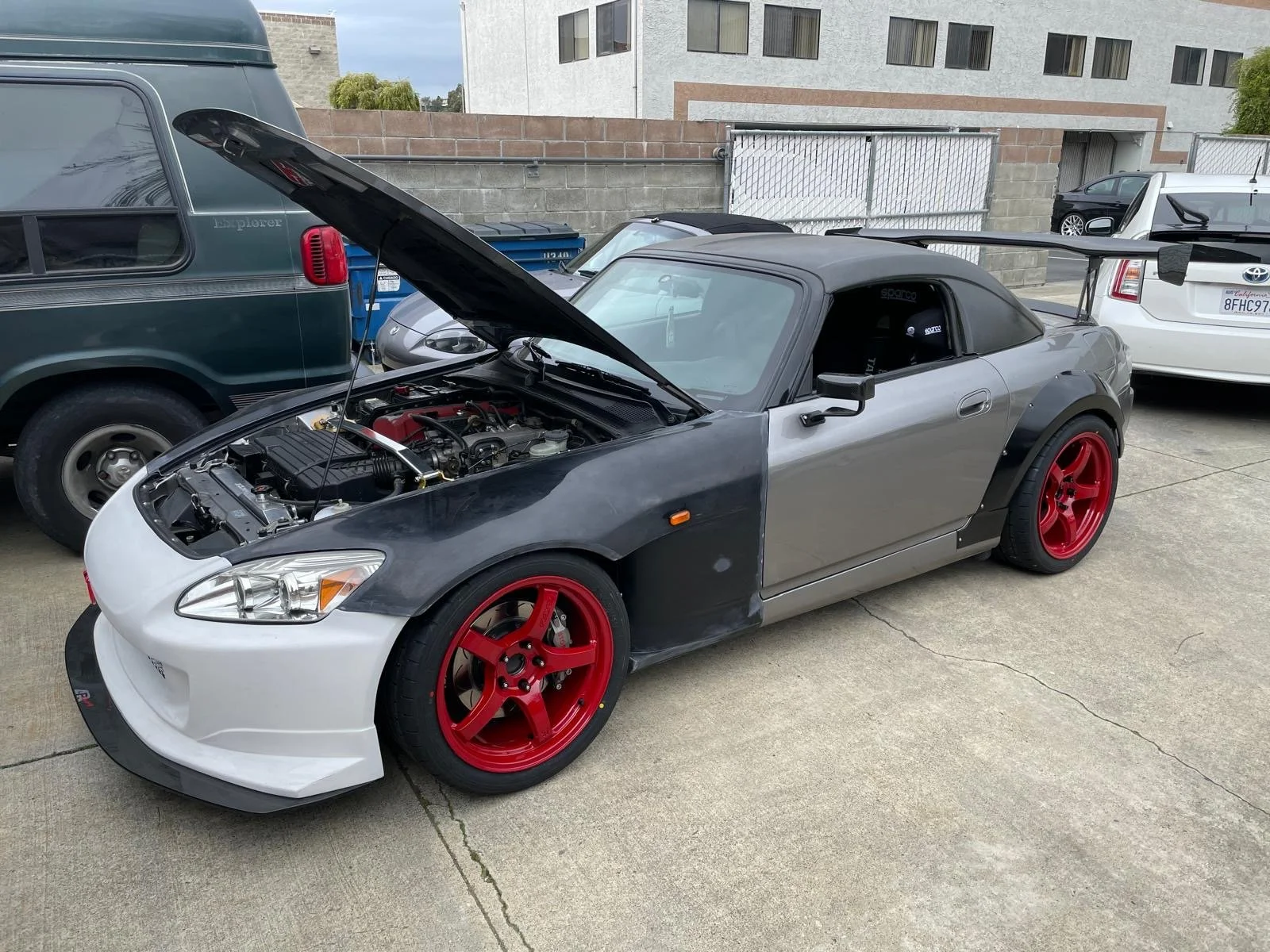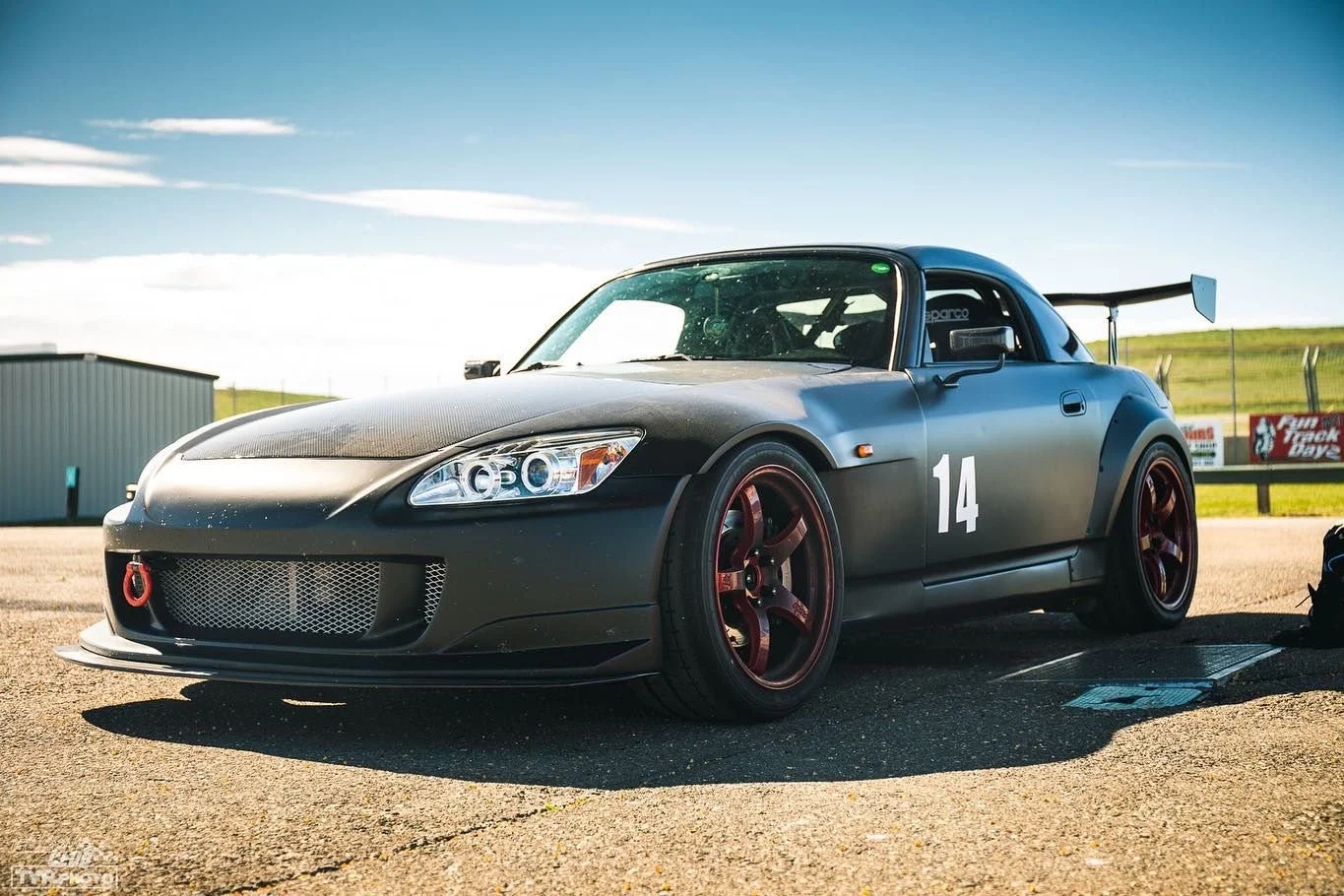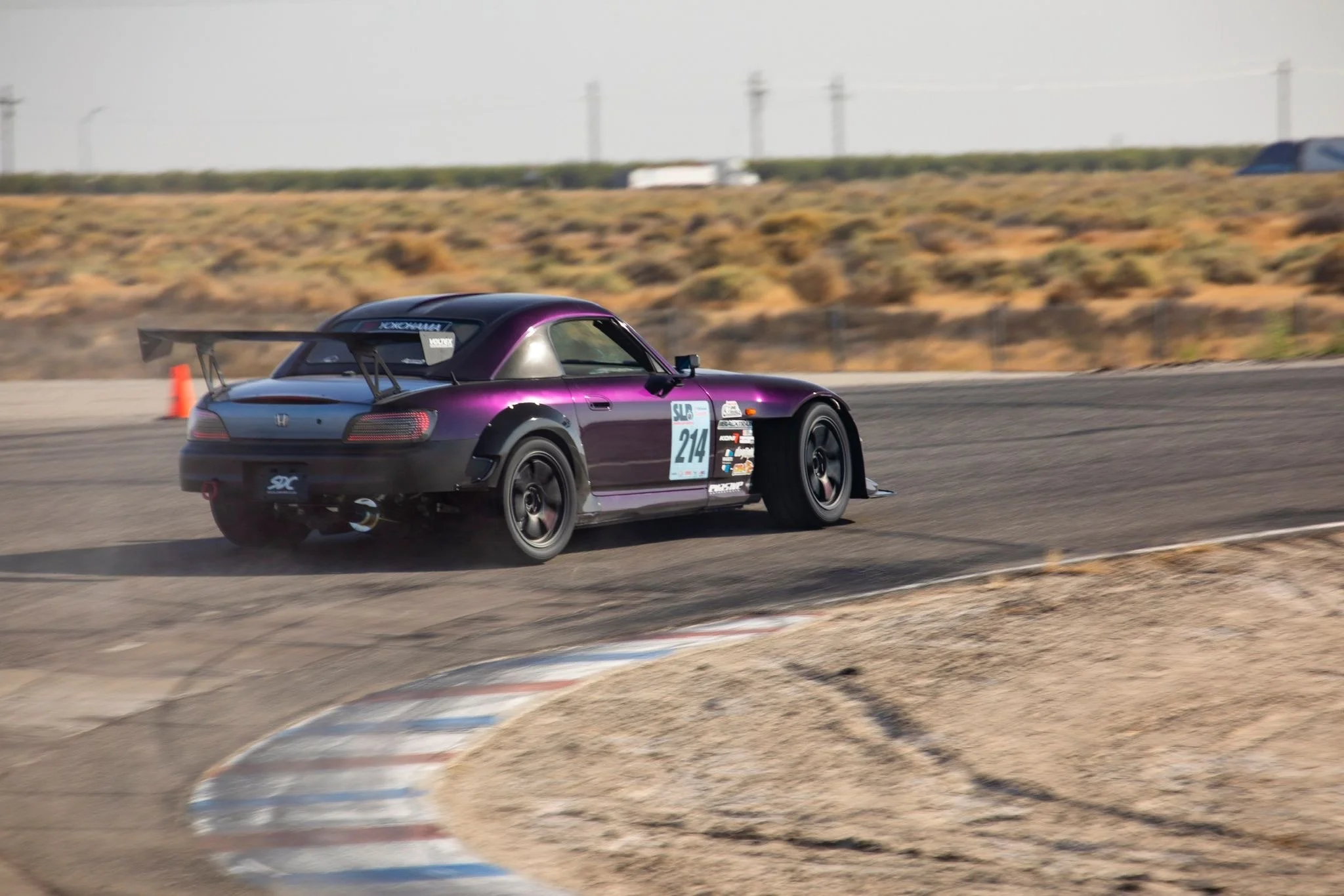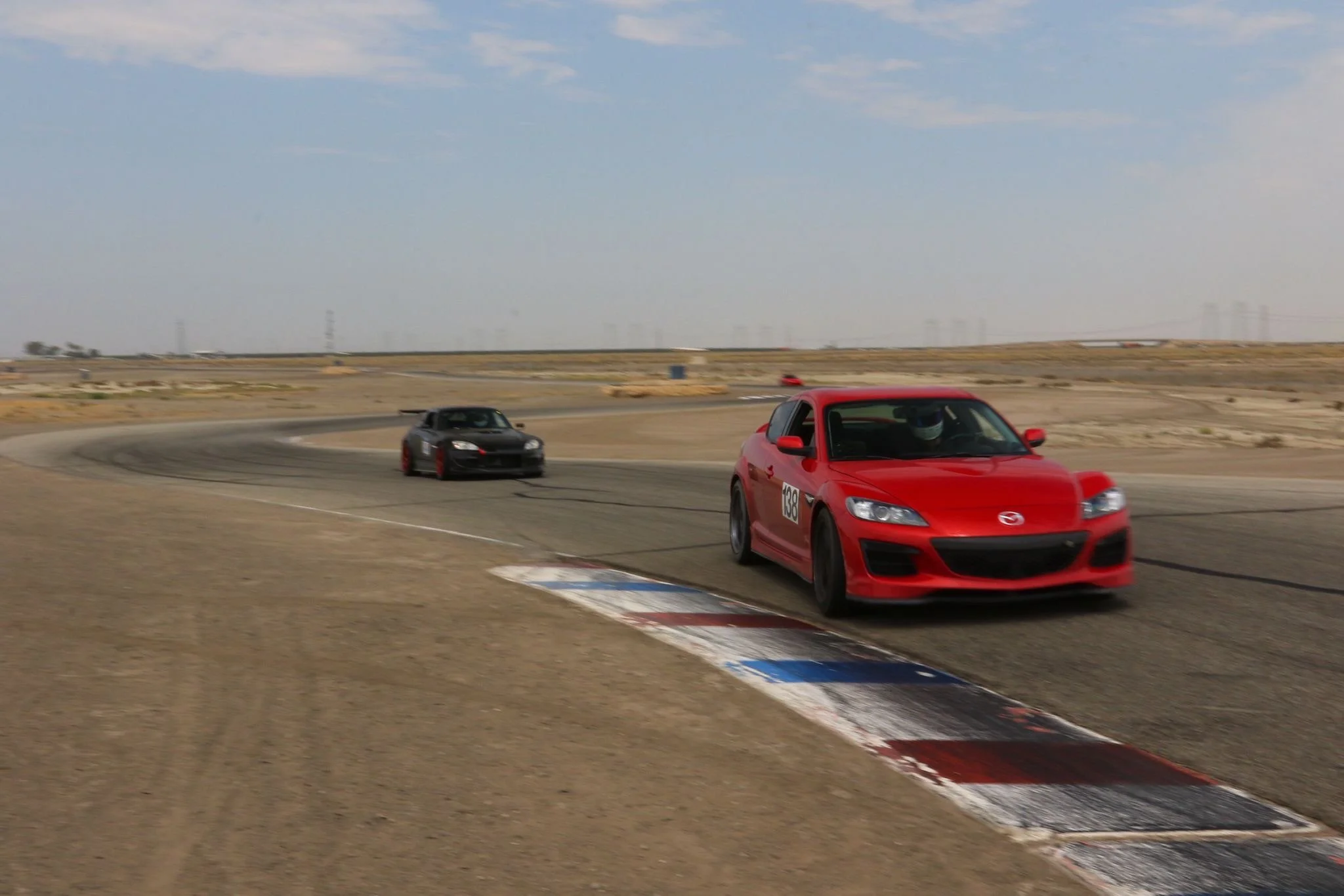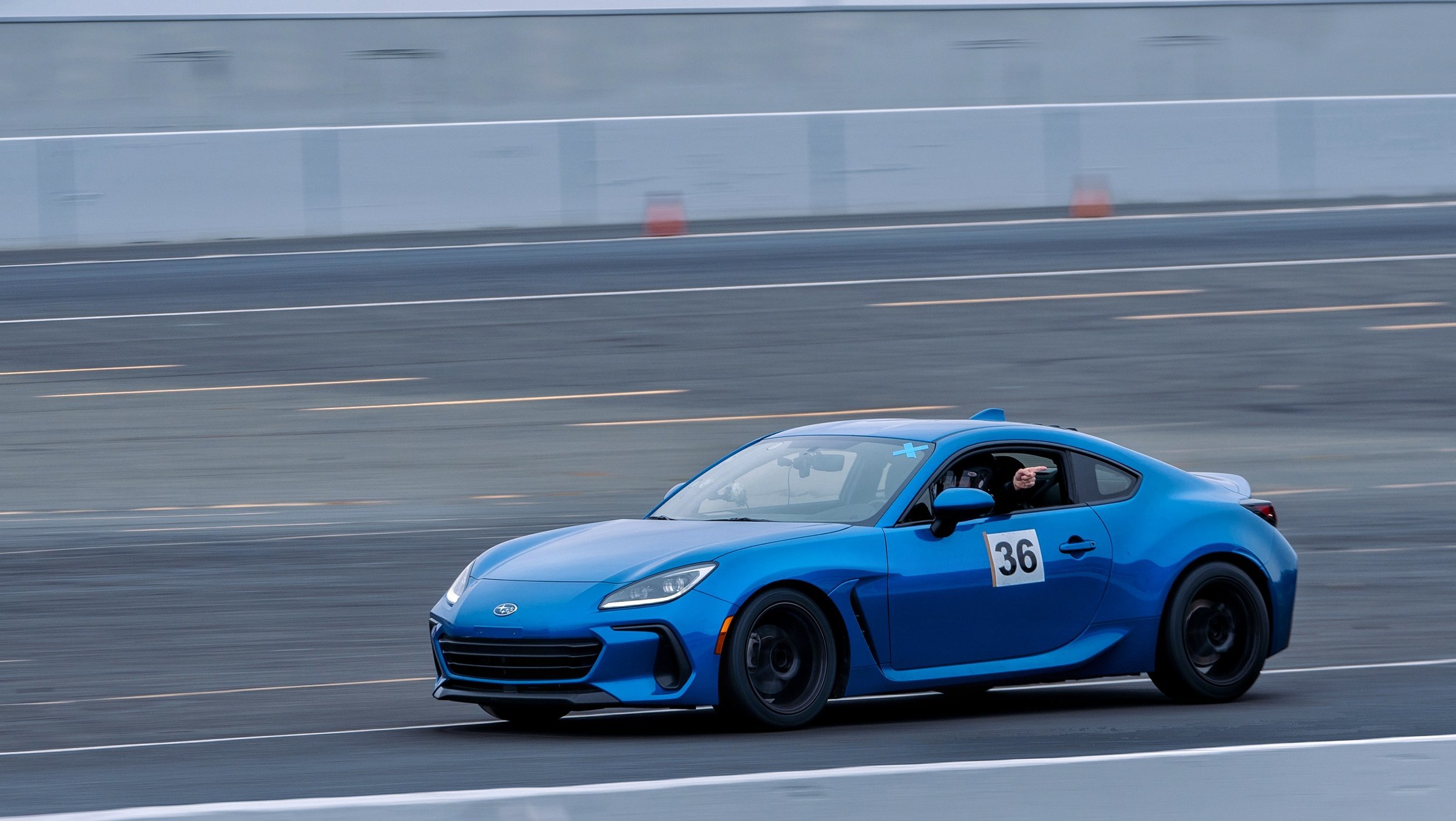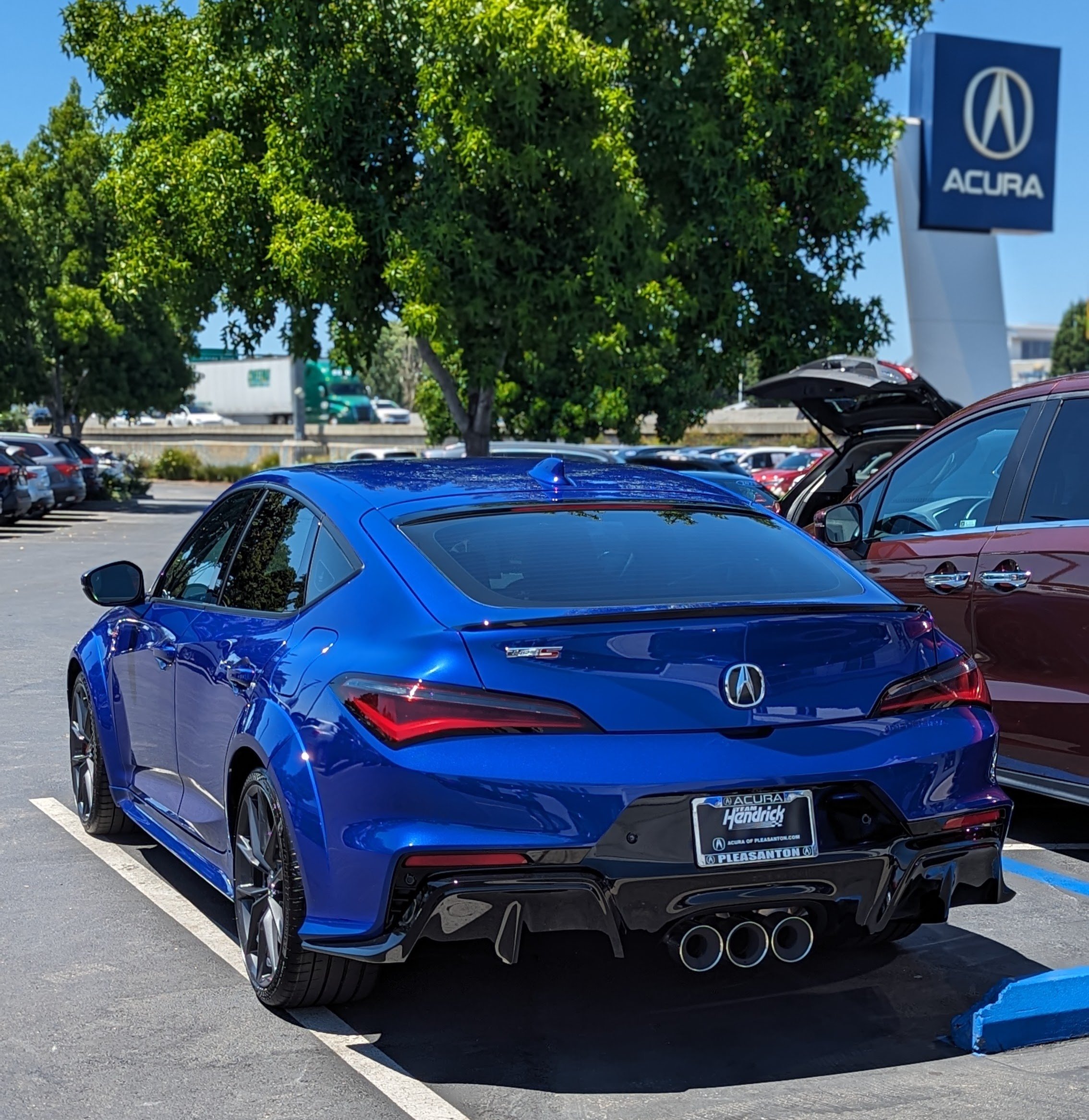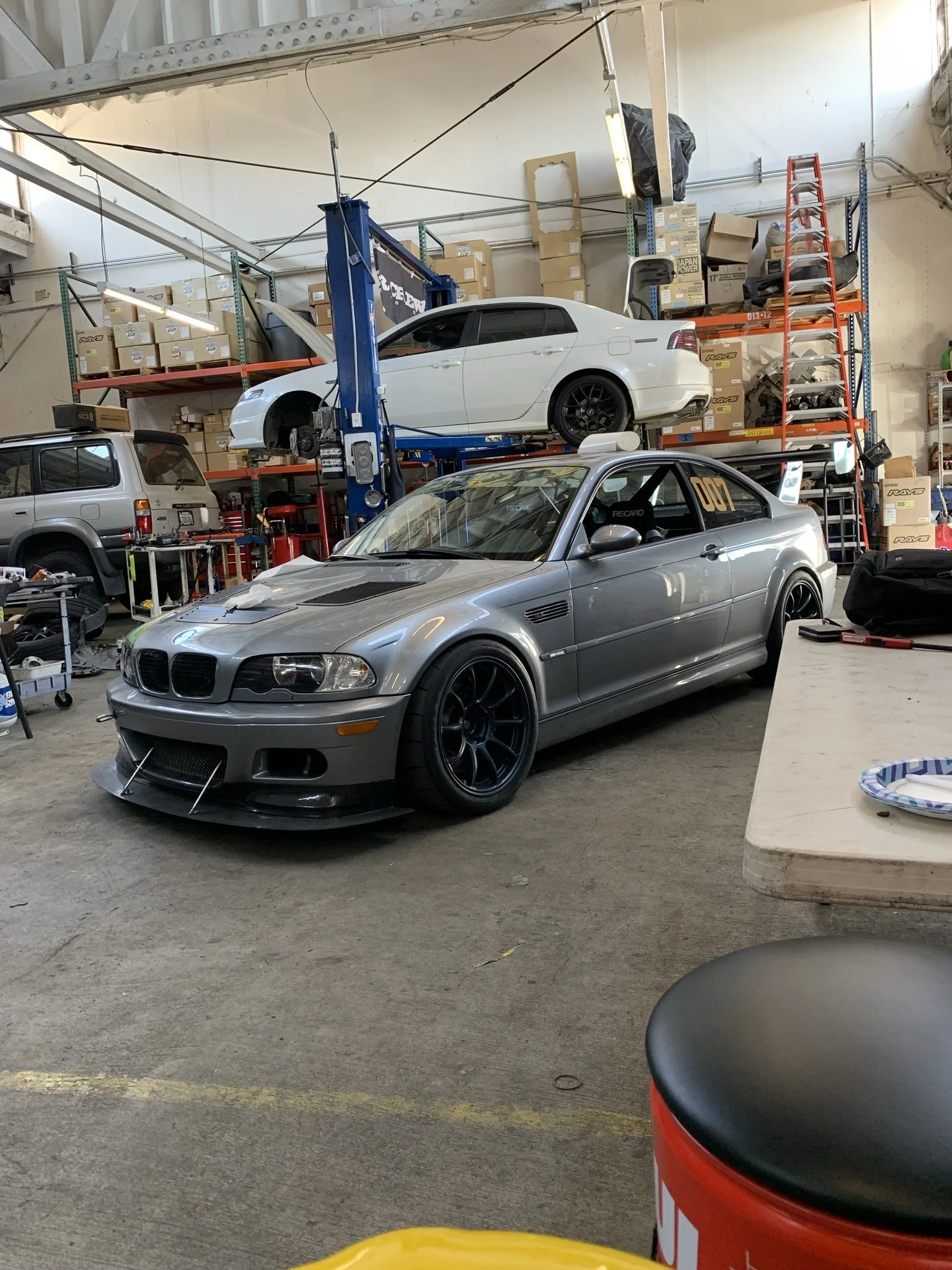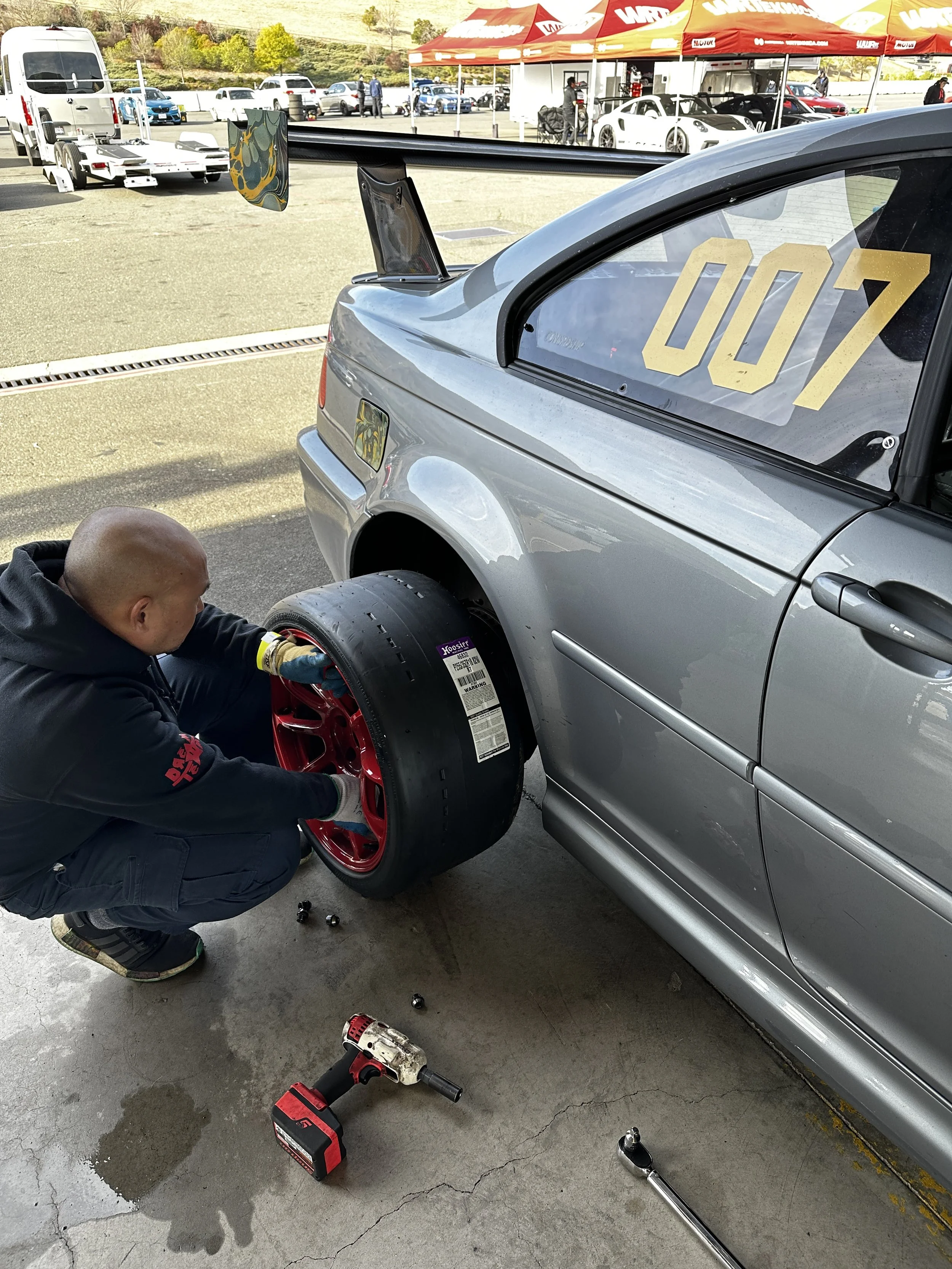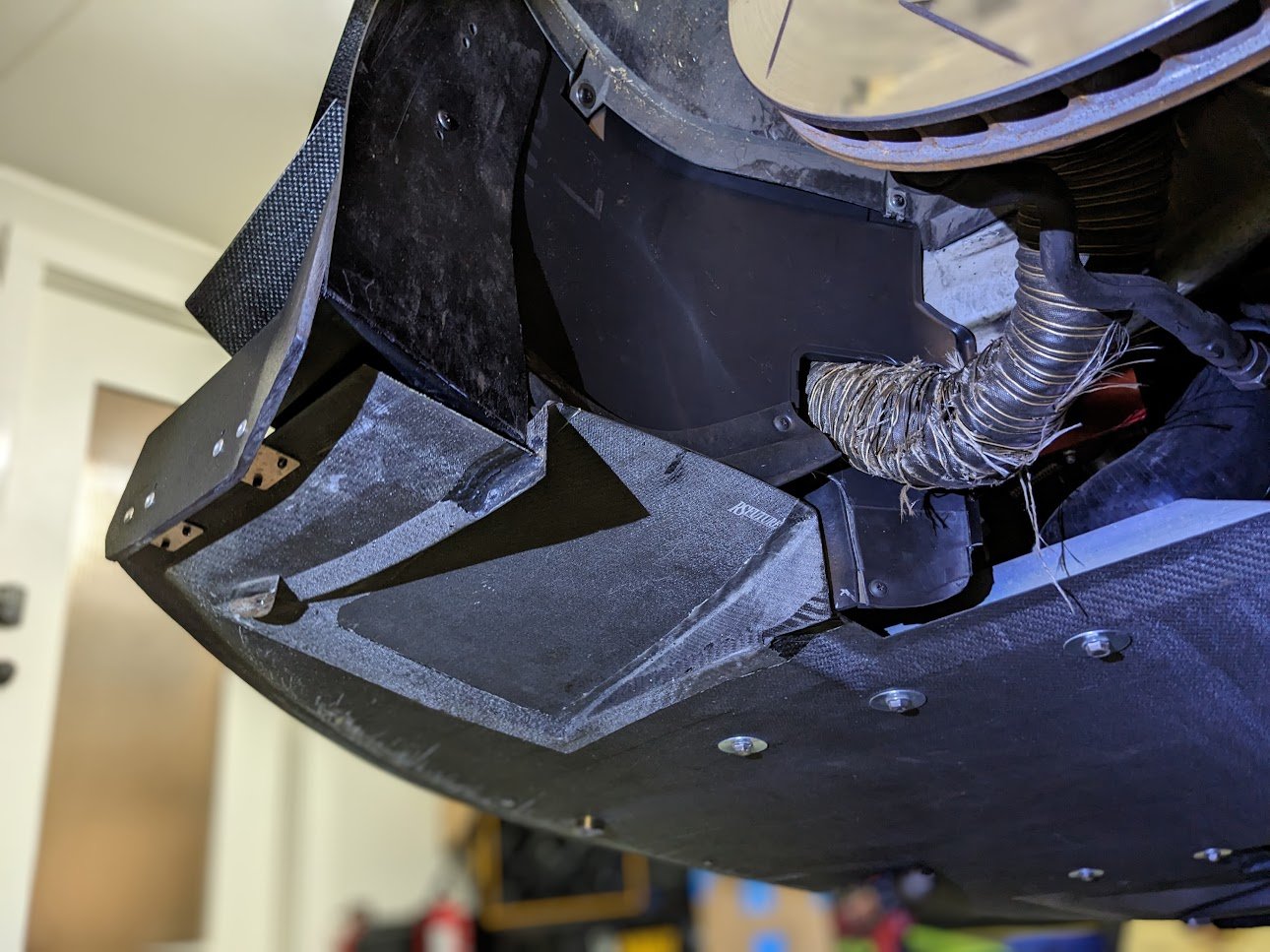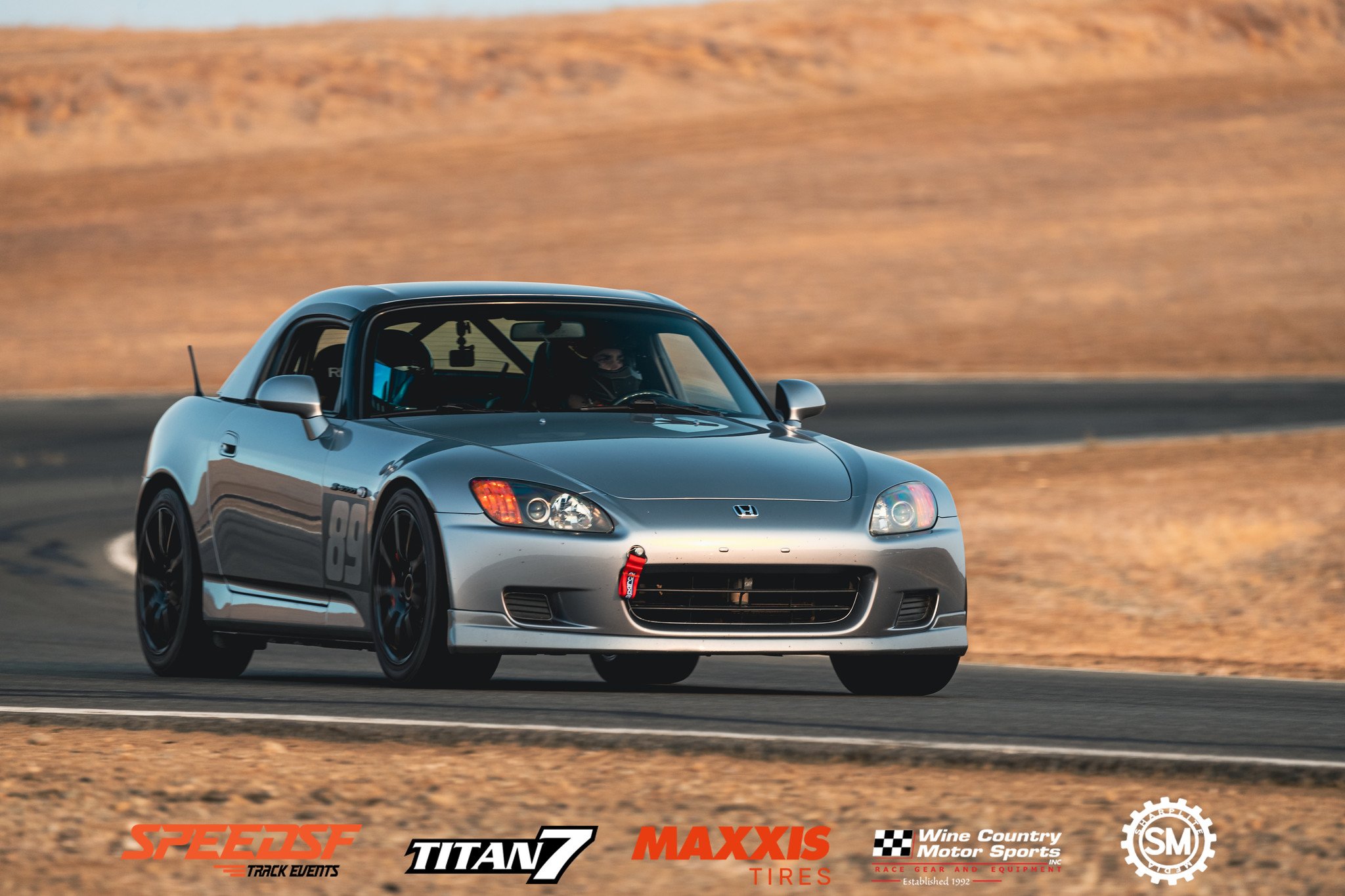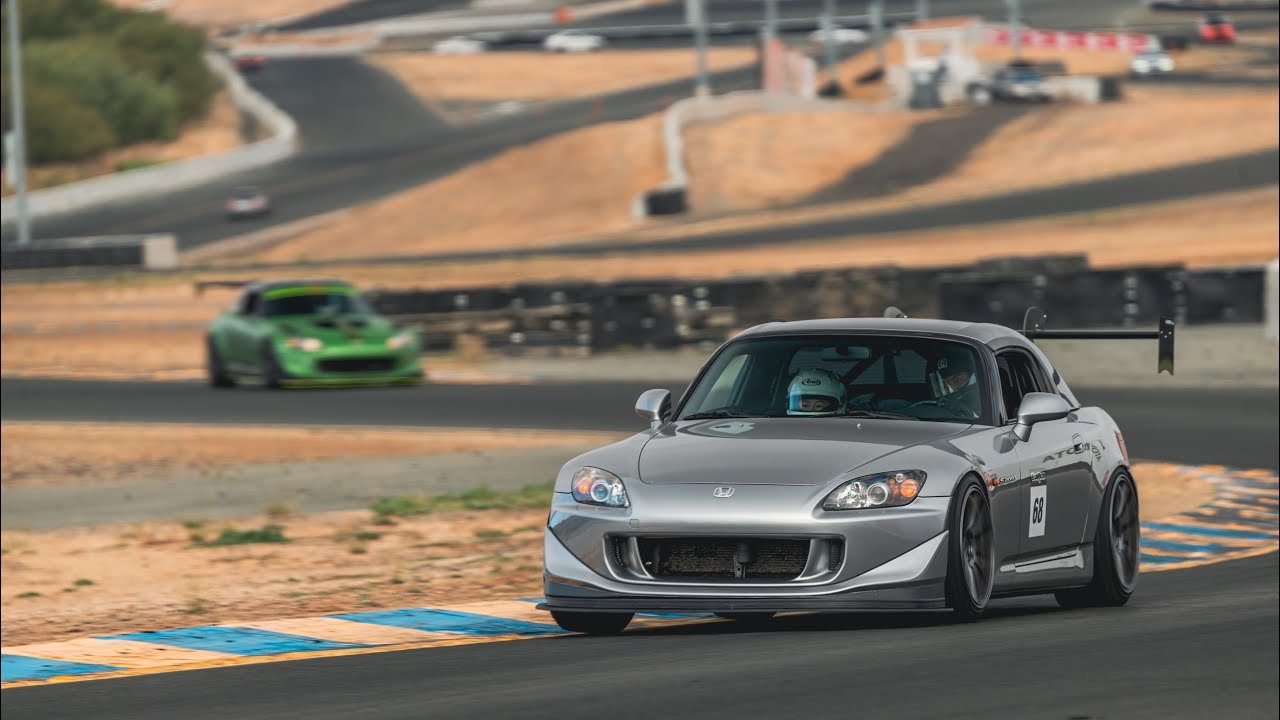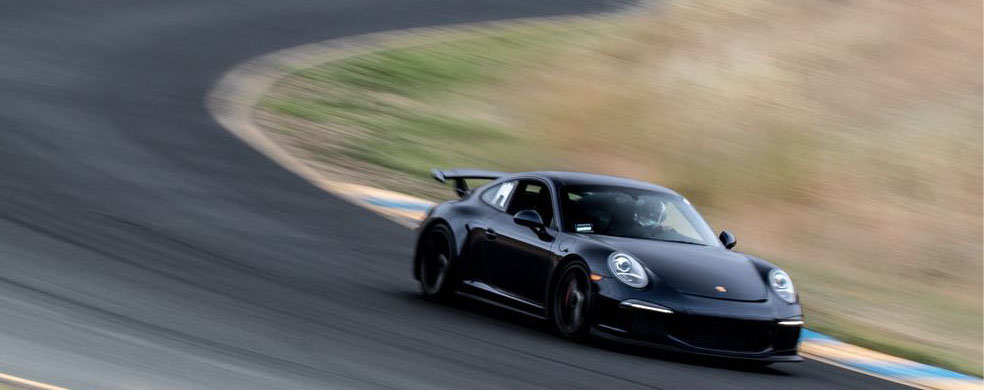
Joe’s AP1 S2000: Continuing Education
A couple years before forty, Joe Drane decided to finally give track days a try. Like with everything he’s pursued, he dove in with two feet and built a stunning S2000 in record time.
It wasn’t until Joe Drane moved out to California at the ripe age of 38 that he was able to try track driving for himself. Being a natural tinkerer and a bit of a hot rodder growing up, track driving had been a lifelong dream, but the opportunities for that sort of thing in rural Florida were few and far between.
After teaching him the ins and outs of network engineering, Joe started learning the cloud and found a few roles with startups in Texas. This created a focus on execution and continuous learning while also placing high value in data helped him put together a stellar resume in short time. This almost obsessive approach would later help Joe learn at a ridiculously rapid rate when learning the racing ropes.
The Land of Milk and Honey
After relocating to San Francisco to start a new role with Facebook, the assortment of beautiful sports cars lining the streets suggested he might be in the right place to learn to drive on track. He searched for ins on the pages of the local sanctioning bodies until he found an easier, more cost-effective way to dip his toe in the water.
Meanwhile, the need for a new outlet was getting harder to ignore. COVID weighed heavily on him, and while he loved his new job, it didn’t offer the distraction he needed mid-pandemic.
When he proposed running a few lapping days one weekend, his wife not only supported him in his decision, she helped him find an appropriate track car. Incidentally, the two had met at work after Joe spotted her leaving her S2000 in the parking lot. It only seemed right that such a car, the conversation starter, would help him start another love affair.
And so he picked out the cheapest first-gen S2000 he could find. This was several years ago, but even by the standards of the time, this car was affordable — and for good reason. “It was just a mess. It had no rear glass, the check engine light was on, the wiring was a rat’s nest, and the motor was ticking. I spent the winter restoring it, but I didn’t realize just how bad things were until I started working on it.”
Growing Pains
“I ran into some issues installing the aftermarket parts. The radiator wasn’t sitting low enough for the hood to close. I took it into the shop at BlackTrax to have it inspected, and there the mess continued to unfold. The radiator supports were bent, and I couldn’t purchase new ones anymore. I had to source the brackets from two fender cutouts from eBay.
Then we pulled the cylinder head and saw the valve retainers were cracked, there was a ton of carbon on the valves, and two of the cylinder walls were scarred. After ten track days, the transmission blew third gear. Oh man, what a nightmare it was.”
To mend the ailing engine and fortify it for track use, he replaced the block with rebuilt F22’s, then fitted a Radium catch can as well as Mishimoto’s radiator and oil cooler. Not eager to deal with another blown F-series, he wisely spent a few thousand more on a Link G4+ ECU to employ several failsafes and extract everything from the motor — mainly more mid-range torque and a peak of 227 horsepower at the wheels.The Link was then paired to an AiM MXG dash which to give him alerts and relay lap data.
Despite the early hurdles he had to cover, he remained willing and able to push on. The obsessive drive which fueled Joe’s career now had a second outlet; allowing him to research the engineering involved, pick parts, test them on track, and build a more supportive social network than the one which work provided him.
As it gave him a new lease on life, he didn’t hesitate to spend whatever was needed to turn this rough example of an S2000 into something exceptional. Within a few months, he’d added a long list of modifications to try and breathe some new life into this aging chassis.
After investing so much in the performance side of things, it made sense to apply an Inozetek wrap to help the car pop.
Among those additions were an APR splitter, a Voltex Type II wing, Rockstar Garage’s Feal two-way coilovers, and Stoptech C43 (F) and C42 big (R) brakes. Studying hours of onboard footage — namely Nate Hackman’s banzai laps — helped him understand just how much harder he could apply the brakes and how severely late he was getting to throttle.
In the interest of getting up to speed quickly, he skipped the cheap tires and went straight to a set of Yokohama Advan A052s, then wrapped them around a set of 18 x 9.5” Advan Gram Lights.
Though he’d already spent a small fortune on parts, never once did Joe agonize over expense during this introductory period. “I decided to pay for an education in racing since I feel it usually pays dividends,” he said. When his engine tuner Jei from BlackTrax offered to tag along to one HPDE at Thunderhill and teach Joe to study data, he jumped at the opportunity. “The telemetry revealed I was shifting a little too much, so we figured out the right shift points and instantly cut a couple seconds off my PB.”
The car was capable and reassuring enough for Joe to continue pushing, but asking more the car led to the standard Torsen differential failing. In its place, Joe put a Puddymod 1.5-way OSG and found the incremental improvement in power-down and stability motivating enough to invest in one other area that wasn’t quite up to snuff: dampers.
Joe knew the top-shelf option would make the car more quicker, more predictable, and less taxing to drive, so he splurged on a set of Blacktrax-built Penske 8300s. Even without much knob turning, the new dampers revitalized the car and helped Joe find the confidence to commit to the quick corners. “My favorite mod, without question. I dropped six seconds off my previous best the first time out on the Penskes. Worth every penny.”
Continuing Education
Learning to wrench and approach the track from a theoretical perspective helped him progress, but never having attended a racing school, he started to wonder if there were ways to improve his technique post-haste. He enrolled in a few drift courses to study the art of oversteering, and soon felt at ease asking the S2000 to rotate a little more than before.
Both his approach and the S2000’s setup are far from perfect, and Joe’s wise enough to admit that. “I haven’t thought much about adjusting the dampers — most of the time I just leave them in a neutral position and try to drive as best as I can.”
But the results from a relatively short time spent on track speak for themselves. He’s learned at a remarkable rate and, with a little more guidance from the knowledgeable group of friends he’s made recently, he’s bound to be fighting for podiums at the front of the S3 class sometime soon. He still has a few points to play with — and they’ll go towards a Zebulon rear wing, a larger Alumalite splitter, and Professional Awesome tunnels.
Joe’s studious nature has also helped him better understand the endless tradeoffs that building a track car requires. While the major cost associated with getting a rough car off the ground can eat into an aspiring driver’s budget, the peace of mind that comes from driving a flawed, imperfect car can help a driver push hard — harder than they likely would in a pristine example. That’s why he has no regrets taking the rocky but fruitful and informative path he took.
Fenton's Integra Type S: A Change of Heart
While he was on the fence for a while with Acura’s bigger, boatier Integra, the Type S had enough of the right stuff to convince him to try this front-wheel drive super sedan.
“I used to be the biggest hater of FWDs,” he started. Despite his introduction to cars coming in the form of a Civic, he rapidly transitioned into rear-drive platforms when he took up track driving. After a pair of S2000s, he moved onto Porsche Caymans, 911s, and, most recently, a Subaru BRZ. What they all had in common was their rear-drive layout, which cemented in Fenton the belief that all other drivetrain configurations were beneath consideration.
Lately, he’s had a change of heart.
It was an unexpected decision to sell his BRZ. Oil starvation issues concerned him, but he had also owned the car for eighteen months and was starting to wonder what decent replacement was out there—something new, fun, and practical between fifty and sixty grand.
Actually, he was a little more particular than that:
1) It had to be track-capable.
2) It had to have been endorsed by Throttle House, savagegeese, or TheTopher.
3) It had to be at least as practical as the BRZ.
4) It couldn’t break the bank in the event of an incident.
Not much in that price range met his requests, but the faster Hondas, despite driving the wrong axle, were fairly close. But it was more than the drivetrain that deterred him at first.
“I remember when the base Integra was first announced, I thought Acura was disrespecting the Integra name. It looked like a boat; it had no resemblance to the DC2 or the DC5 and, I believed, was probably an overpriced Civic.”
A few months later, the Integra Type S was announced, and Fenton found himself torn. “I started to love the way it looked. Even though the general shape was the same, they tweaked the right areas to make it look like a driver’s car. This had proper flares, an aggressive rear diffuser, a vented hood, gaping intakes—it was unique and purposeful.”
“The Integra wasn’t really on my radar until, one day, I was bored at work and decided to configure a car on the Acura website. I specced out my ideal Type S, and figured I’d add my email to their list—why not?
The next day, Acura of Pleasanton, just seven miles from my house, contacted me and offered that exact car at MSRP plus $1,000 of non-negotiable dealer add-ons. One prospective buyer had backed out and my name came up on their list.”
At the time, he’d been considering the FL5 Civic Type R, though the markup was significant. Plus, the car has a number of creature comforts and tuning differences over the Civic that makes it a better daily. An Integra-specific re-tune of the K20C1 engine, shared between the two, provides much more mid-range torque. Additionally, the Integra’s electronic dampers benefit from new tuning to make it a more supple road car.
The case in favor of FWD was growing, but he still had his bias to overcome. “I used to believe that, if you cannot powerslide it out of a corner, it’s not a sports car.
However, he couldn’t find anything else under $60,000 that is spacious, has a backseat, has a manual transmission, is track-capable, and is rear-wheel drive. I realized that, in order to hit my price point, I’d have to make one or two concessions.
I figured I’d at least give the Integra a try. In person, it looked fantastic, and it felt like a $50,000 car inside. It was something I could live with on a daily basis. The shifter is nearly as good as a Honda S2000’s, the ride quality is phenomenal; with the dampers in comfort mode, it rides almost as well as a luxury car. It has minimal torque steer and phenomenal brakes. After driving it around the block, I was sold.”
He bought it that day.
Since then, he’s beaten nearly all of his previous bests. At Laguna Seca, Thunderhill East, and Thunderhill West, he’s beaten his bests in the BRZ by 2 to 3 seconds. Some of that has to be down to Integra having twice the torque, but, as Fenton’s learned, a FWD car might be easier to come to terms with.
“I can lean on the car more confidently, whereas the BRZ would break away more abruptly. I know that, on turn-in, it’s going to understeer, and while that might sound boring, it means I can get up to speed a little bit faster, especially on cold mornings.”
At Laguna Seca, he drove the tires off his car—literally. Underinflating the PS4S tires to try and keep them in their ideal range seemed sensible, but during turn-in to Turn 6, the front-right tire debeaded. “I only stopped a few feet from the wall. It taught me not to track 30-profile tires with soft sidewalls any longer.”
If there was one issue beyond that, it was the lack of support from the stock seats. “The OEM seats are inadequate for track driving; they are the same design as the base Integra with very little bolstering. The OEM FL5 seats are supportive and soft enough for daily driving and track duty. I’d happily exchange the Integra seats’ heating and electronic adjustability for the FL5’s greater versatility.”
And so he started adding the first round of modifications, beginning with a set of 18 x 9.5” + 45 Apex VS-5RS wheels wrapped in Kumho 265-35 V730s (the same as he had on his BRZ for fair comparison), as well as a set of Ohlins Road & Track coilovers.
The Road & Tracks have a reputation for being more road than track, but the Integra-spec 6kg front and 10kg rear springs are much stiffer than what’s normally offered. “The spring rates have helped a lot with tucking the nose. You can get consistent mid-corner rotation with a lift-off the throttle.”
Along with those mods, he added some Castrol SRF fluid and a set of Endless ME20 pads from RHD Japan since the yen is weak now. Their torque rating is much higher than the standard pads, which were at least resilient enough to run sessions at Laguna without fade.
With the first round of modifications in place, he took it to Thunderhill West and ran a 1:24 in his second session—some 2.5 seconds faster than he ever went in his hardcore S2000 on Federal tires. “It felt adjustable; it wasn’t a battle against understeer in every corner. You can transfer weight with the inputs and rotate the car in small, measurable increments. That’s something I find a modern GTI just won’t do.”
Most recently, Fenton ran Thunderhill East Bypass for a day that he found encouraging, if not a little frustrating. After spinning in the first session and getting the black flag, he found himself without traffic in the second session and logged a 2:01. “I believed I could find another one to two seconds in the third session, but one of the flaws of the car held me back.”
In order to completely avoid fuel starvation, the tank needs to remain above half-full. After dipping below the middle hash five minutes into his third session, he spent the remainder dealing with fuel cut. He couldn’t leave too miffed; he’d only had one real session to push the car, and with that 2:01 indicated on his Garmin, he’d already gone three seconds faster than he ever had in the BRZ.
Considering he’s only done three modifications and is already three seconds faster than the BRZ, he has no regrets. “I might not be powersliding it everywhere, but it’s taught me that there are other, subtler ways of manipulation.”
Beyond all this, I can drive to and from the track in complete comfort. With radar cruise control, lane-keep assist, blind spot monitoring, heated seats, a premium ELS sound system, and even a sunglasses holder—I’ve never been so comfortable on my way to and from the track before. Going from a partially gutted S2000, to my mostly-practical BRZ, to this, I’ve experienced three distinct improvements in comfort. Plus, I can ferry people around. There is plenty of space for four adults—roughly the interior space of an Accord from fifteen years ago.”
It’s still a little too quiet to hear with his helmet on, so he’s planning on upgrading to a modest exhaust that should make it easier to gauge where he is in the rev range, reduce backpressure, and find a little more grunt. That said, it’s not lacking in that department; it has more than enough torque to run third gear through most of Thunderhill West. Oh—it could use more front camber.
In Fenton’s eyes, it deserves to be seen as Acura’s flagship sports sedan—it’s a deserving successor to the DC2 Integra Type R. “It’s a compromised car at the end of the day, and yet they have kept all those compromises from adversely affecting driving enjoyment. To me, it’s the perfect compromise.”
Jacek's M3: In Good Hands
By leaving some of the tough questions to the talented guys at R-Crew, Jacek’s been able to enjoy four stress-free years of regular tracking with this E46 workhorse. Simple, clean, seriously quick, and always willing to turn another lap—this car has it all.
Indoor karting lay the foundation, then construction gigs throughout college gave Jacek Kozubek the chance to scrape enough money together to buy himself a two-stroke kart. He flipped a few cars on the side, too. It seemed there was never enough money to fund his new habit back then.
Frustrated though he might’ve been, he kept going with his entrepreneurial pursuits, and these put him in touch with more experienced racers who could make his transition into racing full-sized cars even easier.
Once out of school and making a little more, he started scanning his surroundings for the right track car. It was R-Crew Inc. who helped guide Jacek through this often frustrating process, and after an introductory period with a healthy DC2 Integra, Jacek followed R-Crew’s advice and picked up two of the more popular platforms in today’s track scene.
After the end of this trial period, he decided he preferred his E46 M3 to his S2000. “The S was great, but I felt a little disappointed with the straightline performance. It was better than the BMW stock-for-stock, but when I got to drive Don’s M3, I could see how good an M3 could be with the right modifications.”
Wisely for a man buried in work and family obligations, Jacek handed the car over to R-Crew for modification and maintenance. The first order of business was the typical set of wheels, brakes, and coilovers, though he saw no sense in half-assing it. Fancy footwork it would be, and after adding AP Racing 5000R brakes, JRZ 11-series coilovers, and a set of 18x10” Volk TE37s, the M3 was no longer the plush and porky thing it was in stock trim. It was now a riveting street-track car, but far from perfect.
There was still some sponginess to the car, as well as a notable lack of traction in hairpins. R-Crew replaced the poly bushings with heim joints, then fitted a 1.5-way OS Giken diff to minimize inner tire fire. The resulting surefootedness provided the platform upon which Jacek could add some aero grip; a Bimmerworld splitter and full-carbon wing only helped the car—there were no slow-speed shortcomings from the wings.
Since Jacek handed the car to R-Crew for transportation to and from the track, he didn’t see any reason for keeping the car even remotely streetable—it would be a full-on track build. Out went the interior and in went a Tony Colicchio cage. Additional weight shedders included a set of lexan panels to replace the rear quarter glass, Bimmerworld fiberglass doors, and R-Crew’s full exhaust. After the dieting measures, the M3 weighed in at a respectable 2,850 pounds with driver.
That full exhaust was the only modification made to the motor, and that simple recipe made it into a dependable lump. The S54 sometimes gets a bad rap, but with the right sort of maintenance, it’s a workhorse—Jacek’s record is testament to that.
In four years, he’s run roughly thirty-five faultless track days with this particular engine. These aren’t standard track days either; Jacek typically runs multiple run groups on the same day. Sometimes, he’ll drive two consecutive twenty-minute sessions, and after missing the first few laps of the third session to fill up at the pump, he’ll finish out was is nearly a sixty-minute sprint.
With all the big boxes ticked, there’s not much more that the car needs. For Jacek, a driver who prioritizes seat time, he’s absolutely fine with that. However, the car could go from welterweight to lightweight with the two big jobs on the horizon. After fitting a carbon dash, the guys at R-Crew plan to pull the entire wiring harness and install an AiM PDM32: a solid state power distribution module that allows them to pull the fusebox and all relays. With some luck, these two mods might shed another two-hundred pounds.
Hoosier A7s have been his choice for a long time now.
Over the last fifteen years, from scrounging cents to run karts to spending big dollars at the track, Jacek’s enjoyed good luck with his hobby. When money was tight, he focused on getting the most track time in the way that was feasible: through karting. Now, after making some money, he’s learned to spend it wisely. With all the newfound freedom it’s brought, he’s come to value his time more, and rather than spend it wrenching, he’ll happily hire those who do this stuff better than any hobbyist would.
By leaving the car to R-Crew, he’s been able to ensure his time at the track is spent as efficiently as possible. The car runs without hiccup, it’s set up to suit his driving preferences, and if ever he’s got a question about a change he could make, he has an experienced crew to consult. He’s gone from frugal to experience-focused. If an ambitious driver has the means to leave maintenance and transportation to the professionals, why not? It’s always better to be in the best hands possible.
The money’s been spent, and now all that has to be done is drive, really—drive it into the ground. “I use my iPhones until they’re so cracked I have to replace ‘em, and I’ll drive this car until I put it into a wall.”
It’s amazing how he’s been on the money the whole time.
Shan's S2000: Hitting the Books
After Shan spent his college years as a test driver for his Formula FSAE team, he started tracking an E92. The heavyweight M3 didn’t give him much joy, so, eager to get back into a pointy car, he picked up an AP2. With his engineering expertise, he’s been able to get the most from a modest assortment of modifications and turn this into a capable, dependable track scalpel.
When you’ve had so many formative driving experiences in something as light as a kart, or as purposeful as a Formula SAE, many production cars feel a little cumbersome. This was Shan’s perspective and the impetus to sell his E92 M3 for something responsive, svelte, and raw.
While a college student, Shan was both powertrain lead and test driver on his Formula SAE team. As part of getting the most from their bike-powered spaceframe car, the test drivers – he was one of several – were expected to refine their driving techniques through go-karting. As his own development as a driver dovetailed nicely with his expanding understanding of chassis setup, he developed an unshakable confidence that, years later, would enable a rapid ascent in the world of time attack.
Before he could put himself in a car which would benefit from his years of racing experience, he took a left turn – one that was unpredictable, yet understandable.
He had his foray into time trials with a heavyset production car unlike the other machinery he’d grown accustomed to: an E92 M3. “There were some cars I was considering, but this one was the most versatile.”
Its heft and plush GT-designation left him feeling a little lukewarm, and after five track days, he recognized his need for something with a bit of that single-seater urgency he missed.
First kiss
Rather than go full-180° and buy another spaceframed car, a trailer, and a tow rig, he decided to compromise in the name of practicality. For him, the S2000 was the only fendered car in his price range that had the pointiness he was after. Plus, he didn’t mind hacking one up.
He found an AP2 that, while a little rough around the edges, was a suitable candidate for a track build. A little patina and some missing interior panels didn’t upset him, but the blown Konis certainly made the trek from Los Angeles back to San Francisco less than comfortable. Thankfully, he knows a good chiropractor.
However, those minor annoyances faded when he took the car to Laguna. There, he was reacquainted with all those familiar feelings from his college days — plus a new form of fear.
“I don’t think I’d ever driven something with so much lift-off oversteer before, though that was due to the setup in some part.”
The Honda had teeth; its mystery alignment kept Shan guessing when it would slide. However, even on ancient RS4s and a comically snappy setup, the car was eagerly responding to his subtler inputs. It kept him alert and, with a little time to learn its habits, it raised his confidence.
After adding the first round of track-day bolt-ons – brakes, wider wheels, and a set of forgiving NT01s – he could start exercising his old approach to finding speed. Shan had a few areas of focus:
Ergonomics
Ensuring everything is easily reached was paramount. As he learned from FSAE, the more comfortable one is, the harder they can push. For this reason, he added a very bright shift light directly in his line of sight.
Chassis first
Aside from a Hondata piggyback and a testpipe, the motor would remain stock; the gains would be made in cornering speeds.
No more than necessary
Only parts that had proven to cause a bottleneck or had failed would be replaced. This was done to save, but also to ensure his engineering abilities would be put to good use making the most of what he had.
After accepting the limitations of his Konis, he splurged on a set of JRZ RS Pros. They’d been vetted by his car-crazy colleagues. Raised to an appropriate ride height and aligned correctly, he started putting in the seat time.
The car stayed as it was for some time as Shan delved into the data and refined his technique. “I analyze my laps through RaceStudio and take very detailed setup notes after a session to make sure I'm aware of what's going on, what changes i'm making, how the car responded to those changes, etc.,” he stated.
Complex, but simplifying
When it came time to add some aerodynamic pieces, he used his analytical mind and his engineering ability to make the most of the new alterations.
“My first laps with aero weren’t much faster than my previous best,” he started. “I was still driving the car like I had been before the wings; tentative at corner entry, braking somewhat gently. The aero changed that. I used to worry about oversteering too much at turn-in, but I can throw the car into the corner now. If it needs to scrub some speed, it’ll just understeer.”
He could start changing some parts to make use of the additional aero loading. “Previously I was running a less aggressive compound in the rear because the car was prone to entry oversteer, which would only get worse if the pad compound in the rear could cause momentary locking. With the aero grip, that’s no longer an issue, so I have a high-torque pad at the rear.
Clearly, the right sort of aero helps not only with outright cornering speeds, but stability as well.
Drag bad, grip good
However, this all comes at a price; drag cannot be overlooked in a low-powered car like the S2000. Trimming the wings was vital to find a net improvement in speed, and after using the suggested window for optimal wing angles from 9LivesRacing, he timed every subsequent alteration until he found the fastest settings.
“One thing I did after the first aero day was try to visualize the corner speed increase and drag increase around Laguna. I made plots to understand the behavior better. I could reach out to people with more racing/motorsports experience too, to see if this aligned with what they would consider a car with properly functioning aero, so it was decent validation.”
Shan had to increase his spring rates by 100lb/in to handle the aerodynamic load.
Shan’s taken a studious, resourceful approach to building this gleaming AP2. It might not sport top-shelf parts in every area, but those used have been tweaked and fettled to get the most from them.
An ideal setup is only possible if one has the ability to run the necessary calculations. Shan’s background in racing a clean-sheet kind of car has helped him see what’s vital to speed, and that alone gives him an edge that primo parts alone cannot trump.
He’s clearly passionate about the engineering side of things, too. In fact, he’s used his engineering expertise to build new bits to improve the overall package. They might not be obvious, shiny, or expensive, but, in aggregate, they make a major difference.
“When I have the time, I’ve been using some of the 3D printers at work to build some basic parts to help. For example, I put together some supports to prevent the trunk from flexing at higher speeds.”
Though the car is fast and forgiving, Shan’s still seeking a sharper edge. “The front is much less effective than the rear, and, for now, I just deal with the understeer. I’ll try increasing the rear spring rates to encourage some rotation. It’s not a normal way of dealing with an aero problem, but it might work.”
He’ll find a solution — even if it keeps him in the garage all weekend. For Shan, staring at plots all Sunday to find a few tenths is time well spent.
Parts List
Sakebomb rear sway bar, Eibach front sway bar
Bump steer + roll center correction kits
Recaro Profi SPG driver's seat
JRZ RS Pro (900lb/in front, 800lb/in rear spring rate)
Racebred Components front splitter kit
9LivesRacing rear wing
Wilwood Superlite front BBK w/ Carbotech XP12 brake pads all around
Hasport polyurethane engine and differential mounts
Maxxis RC1 255/40-17
Dustin's Supercharged M3: A Lesson in Applied Economics
With a full plate and a desperate need to go fast, Dustin managed to keep his head, get the right car, get the right coaching, make the right upgrades, and put prove just how quickly he could develop the established E46 into a 500-horsepower time attack machine.
He wasn’t intimidated at the prospect of buying and tracking an E46 M3, but Dustin Furseth felt some pressure to build one in a way that would allow him to balance his checkbook. That’s a normal concern, but with a baby on the way, he couldn’t afford to get in over his head.
But with the car’s reputation and its strong aftermarket support, as well as his knack for finding a little sponsorship here and there, he turned this basic road car into a approachable, reassuring, and still-somehow-comfortable track toy in only a few years. It also makes 500 and change.
For the first few seasons of track work, Dustin was known to leave a child’s car seat by his parking spot at the track; sometimes he’d drop his boy off at daycare before putting in four or five sessions. He wanted to make the best use of his time, clearly. For that reason, after adding MCS one-ways and Ground Control arms, he hired a coach for several weekends and refined his driving style.
His approach was an intelligent one. After one impressed coach suggested he try a more competitive form of motorsport. Dustin finally had the confidence to step up, and after a friend recommended Global Time Attack, Dustin entered his modest M3 in Street Class.
In time attack, he found a sparring partner in Karl Taht, whose S2000 was, on average, a hair faster at technical tracks. Dustin’s M3 usually had the upper hand at faster tracks, but the two were trading tenths regularly and pushed to get the most from themselves and their cars.
Not interested in mega power or hiring someone to fabricate piping, Dustin picked this easily-installed kit.
When Karl decided to turbocharge his F20C, he inadvertently dropped the gauntlet. Dustin responded by modifying his S54 with a trick head and some big Shrick cams, but it was no longer a reliable motor. After a year and a half, it popped.
When it came time to rebuild, he considered another attempt at a highly-strung engine, or, as his friend had, he could try forced induction. A little research convinced him he could bring power up by 200 and still save some money over another strung-out S54 if he could bring himself to boost a stock engine.
With an ESS G540 supercharger kit, he had to upgrade the clutch to a Clutchmasters FX725, beef up the cooling system with a Mishimoto rad and oil cooler, and add a little ducting to ensure air flows through the right channels and isn’t recirculated at the backside of the radiator.
Now, the boosted S54 is a real powerhouse—legitimately GT3 RS-strong, distinctive, and resilient. Even though the blower makes a peak of 515 at the wheels, it doesn’t change the delivery or the driving experience that much from when the engine made 300 at the wheels.
The blower doesn’t really change the shape of the curve, it just elevates the curve a few hash marks higher on the dyno chart. It feels intuitive. What is most different about the new powerplant is that there is appreciable torque where there once was none. It’s not peakier than the engine was originally, it feels like there are a few more cubes available.
An RS Future splitter helps encourage a neutral balance at speed.
The power was easily transferred into propulsion before the blower, but the new grunt alters the way Dustin has to depress the pedal. With eight pounds of boost at his disposal, he can spin the wheels for a hundred feet after a second-gear chicane if he’s out to impress a passenger.
However, the car’s grip and poise means it still takes a lot of provocation to do so. In other words, car can still be leaned on mid-corner and generate strong drive off the corner, provided he’s not using the wrong gear.
There is the matter of gear selection. The hairpins which rewarded a second-gear exit now have to be taken in third; the power delays throttle application in sections where the car is traction-limited. Not everyone considers it, but if a bump in power means it takes longer to deploy it, is it worth the addition?
Going from a 275-square setup to widening the rears with 295s has made the car border on high-speed understeer.
The answer is yes. Even when it does light up the driven wheels, the rear remains planted. Maybe that’s the APR GT250 wing imparting some stability, but even in slow hairpins, the factory LSD does a stellar job.
This staggered setup promotes a little understeer, but it’s a minimal amount of push and it’s really only noticeable in faster corners if he’s hasty putting the power down. Yes, there is an iron lump up front, but the big motor doesn’t make itself noticeable unless the throttle’s stabbed mid-corner. Line things up after a committed flick into the corner, then power out with encouraging neutrality.
For all this fun, he’s had to pay another fee on top of the supercharger’s purchase price. The oil breather, after enduring high revs, would mist onto the belts, which would underdrive the water pump and overheat the engine. After a quick fix involving a rag and some hair ties, the engine hasn’t given him any other headaches.
“The brakes have been a great addition. When I put something on my car that I believe in, I try to explain it to people as best as I can.”
The added strain on the brakes from a middleweight with serious power made it necessary to go for a big brake kit. However, he wasn’t keen on spending the money needed to buy the AP Racing kit he had his eyes on, so he found an affordable alternative.
Underneath his Apex VS-5RS, he opted for PB brakes front and rear. The fronts use eight-piston calipers and 380mm rotors, and the rears use six-piston calipers with 356mm rotors. Complete with the motorsport-grade bobbins, knockback springs, and floating rotors, the kit has proven itself track-worthy. The calipers are finished in a subtle shade of silver that blends in beautifully, too.
By milling down used pads bought from endurance teams, he’s saved himself money and time. The rotors rarely need replacing, the pads last thirty-odd sessions, and even with the old Mk20 ABS, the car inspired a lot of confidence in the braking zones. Higher speeds and ~3,000 pounds put some real strain on the binders, but the PBs have handled that well.
And despite all that focus and performance, it’s still very much the sleek machine Dustin bought seven years ago. Yes, the wing and RSFuture splitter, and N15 vents leave nobody doubting its role as a track toy, but Dustin’s insistence on leather-wrapped Recaro Pole Position NGs and the retention of most of the interior prove he’s after a little more than speed alone.
It doesn’t come as a surprise that Dustin is an architect—he has to weigh aesthetics and functionality as part of his job. The soft shape of the car, the silver and carbon-black scheme, and the simple execution make it a stunner that you can sit and drink in for minutes, even if it doesn’t call your name from across the paddock.
In other words, it’s a complete car—and not many cars built on a careful budget are truly complete. Dustin did his homework, though, and even with a full plate, he got where he wanted to be quickly. Stay in school, kids.
Modifications
EE G540 Supercharger Kit
Rogue Engineering section 1 and 2
Agency Power section 3
Epic Motorsports tune
Naturally Agitated Stage3 VANOS (ported for higher oil pressure)
SAP delete
Electric fan conversion
Turner power pulleys
Sachs clutch
Mason pedal box
APR GT250 wing
CSL carbon roof
CSL trunk
CSL diffuser
Hard Motorsports splitter, upper canards , and carbon door cards
MCS 1-way coilovers
Apex VS-5RS 18x10”
PB BBK with 8-piston 380mm fronts and 6-piston 356mm rears
Hawk DTC30 pads
Sparco Seat
Schroth harnesses
Custom 4-point cage
Alex's AP1 S2000: Earning His Spurs
Tempted to try something livelier than his DC1, Alex bought himself an AP1 S2000 a few years back and learned how lively it really was. He chose his modifications with the aim of making it reliable and predictable, and in doing so, built a foundation upon which he could learn his craft.
Though this AP1 wasn’t Alex Caruso’s first track car, it was the car with which he truly earned his spurs. A few years before buying this car, he got his feet wet with an NA Miata, then later an Integra GSR. Thesef two taught him about car control and patience with the right foot, but they lost their appeal with time. Eventually, he wanted to try something a bit more exhilarating. By then, Alex was no longer a student just scraping by, and he had a little more to spend on a special sort of car.
When this car popped up in his feed, he immediately checked his bank balance. Hardtop, great paint, totally stock, and basically a blank slate with which he could express his creative streak. There was one problem, though: he couldn’t quite afford it. Undeterred, Alex committed to finding the money. With the help of his supportive wife, he scraped together enough for a down payment and brought it home.
Not long after, he started leafing through those old lists of dream parts he’d scrawled away when he was a daydreaming, broke college kid. The first round of mods were intended to make the motor indestructible. Because the ‘01 models didn’t receive the piston-cooling oil squirters the following year’s motor did, he retrofitted those to fit his motor, careful not to crossthread anything down there. Following that, he added AP2 valve retainers, then sent his valve covers out to be drilled; the AP1’s valve covers need to be perforated to help move some of the blowby.
Though these drilled valve covers works with the stock PCV system, Alex added a catch can—one which doesn’t need emptying until the fifth track day.
With the powertrain bulletproofed, he started running his car to the 9,000-rpm redline and enjoying the honeymoon phase, spins and all. The AP1’s nervousness was thrilling, challenging, and hugely educational—even if he had to clean plenty of grass out of his wheel wells. “Once I started pushing, I looped that thing so many times,” he laughed.
Though AP1’s dynamic toe curve kept him busy and certainly accelerated his steering corrections, he felt it prevented him from totally trusting the rear. “It almost felt like the rear was taking two sets in every corner,” he explained. In an attempt to get closer to his car and predict its movements better, he started with the second round of improvements.
Wisely, Alex went for a full set of Blacktrax sphericals, Hard Race motor mounts, and solid LSD collars. The added responsiveness and transparency of the car grew in proportion to his confidence. However, there was one glaring shortcoming he still hadn’t addressed.
That pesky toe curve could only be truly changed by swapping out the old AP1 subframe for an AP2 subframe. The first weekend out, the car was predictable and encouraging in a way Alex had never felt before, and so the second honeymoon phase began.
Never once in his four-year relationship with the car has he felt bored with the car, but he has always wondered if the wear items would let him down. To give him peace of mind, he reinforced the flimsy spot where the front upper control arm connects with the chassis. While at it, he swapped all four hubs out for Karcepts items and rid himself of another potential nightmare.
Finally, after a year of tracking his stout and predictable AP1, he started searching for more speed. The first round of go-fast goodies consisted of Sake Bomb Garage’s brake kit, a set of JRZ RS Pros, and a few engine bolt-ons—the last chosen mainly for noise.
“The coilovers really transformed the way the car handles over rough or uneven pavement. I knew the stock suspension was already well-tuned by Honda, so I didn't want to skimp on coilovers that would ruin the handling characteristics the Honda engineers worked so hard to develop. After popping my right rear upper ball joint out of its control arm coming at Laguna Seca, I knew wanted to get something that could control the chassis better without bottoming out as frequently or harshly.
I happened to make a connection with a JRZ vendor and scored a deal on a set of RS Pros. Now, not only is weight transfer much more immediate, I don't have a second thought about the car unsettling over bumps, like the Dorito at Thunderhill West. Having two-way adjustable coilovers also opens up a whole new world of suspension tuning that I'm slowly learning about. The ability to adjust the handling balance at the track and the peace of mind that the dampers will soak up any bumps I throw at them make these coilovers worth their weight in gold.”
The focus on the foundation, the time spent learning an imperfect car, and the carefully chosen selection of performance modifications all paid off in the first session following. Running on the same set of Hankook RS4s he’d used the time before, he dropped his times at Thunderhill West by two seconds.
There’s not much more this dependable car needs. It’s lively, reassuring, and while it’s not the punchiest car in the field, it is one of the most agile. Because he prioritized predictability and transparency over any other performance trait, he might opt for an aftermarket differential—Seigo Ma’s shown him how important they are. Maybe a little aero in there for good measure, but beyond that, all he needs is good weather and the time to spend with his second love.
“With how much I’d dreamed about this car before buying it, I was worried that I would be disappointed with the S2000, but I can safely say it's lived up to all of my expectations and then some. It's been rewarding to work on, to fix, to push myself with, and it's the exact tool I needed to get comfortable on track.”
Jake's S2000: Balance and the Best of All Worlds
Jake learned that he really can have it all with his AP1 S2000. Basic but capable, this particular car has just what’s needed and nothing more to make it unreliable. Plus, it looks better than most with a distinct coat of Porsche Chalk.
The first 5-10 track days went well. Jake Montinola’s E36 M3 was so forgiving, so comfortable, and so beautifully balanced that the start was without many worrying moments. That changed when he tried an S2000 on the tenth event. He was hooked immediately, and the ease with which he entered into racing was replaced with trepidation. But that justifiable concern was tied to a sort of excitement that Jake knew he needed more of in his life.
The breakaway in the S2000 was faster, the reactions faster, and the need to drive it more smoothly forced him to alter his style consciously—one of the first things he changed. Gary Yeung and Gary Wong were huge influences who helped reshape his style to be smoother, neater, more considerate of things like the rate of brake release, and much more concerned with keeping the rear underneath him. Some people can drive the S2000 with a lot of slip angle very effectively, but the inherent pointiness of the car requires a delicate touch, regardless of driving preferences.
Gary Yeung of Elite Performance also lent a hand with the servicing and upgrades. For a long while, all the car had was an HKS exhaust and a set of Winmax pads. That was enough—Jake had been struggling to keep the fidgety car pointed in the right direction. “I probably spun it every other session the first couple times I took it out,” he laughed.
The softness of the S2000’s stock suspension became an issue he didn’t want to deal with any longer, so to try and minimize some of its willingness to oversteer, he installed a set of Ohlins DFVs. The body control improved, but he came to find that he liked the S2000 with stiffer suspension underneath it. In the Ohlins’ place, he moved onto the HKS SP coilovers that “made a world of difference.”
That didn’t mean it became an inert lump of metal. The car turned fantastically when he replaced the stock wheels with a set of Weds Sport TC105s and 255-section Advan A052s. “Turn-in was immediate after that. Then Gary [Yeung] helped me neutralize the car with a few setup tweaks. I added a front sway bar, which helped stabilize the car. I then played around with the rear dampening, as well as a more aggressive alignment with more rear camber helped improve rear traction.
Always a fan of the ASM cars, Jake made his look like one with their front bumper and wider fenders.
In addition to having this extra pointy front end at his disposal, he had a fantastic braking system with real anti-dive to help the platform stay solid so the driver could absolutely stomp the middle pedal at the beginning of the brake zone. “The stock brakes were great, but eventually I upgraded. The Stoptech ST40 front, a reasonably priced setup, has paid off some of the initial cost with pad savings over the last couple years. “Plus, the brake feel stays consistent through a session, and I never have heat problems. I might’ve cracked one rotor, but I think it’s a great kit for the price.”
The motor went on for years, but once he passed the 170,000 mile-mark, it let go. He turned to Gary for a rebuild, who was mindful of Jake’s budget, so he used OEM parts where he could—including OEM AP2 valve springs and retainers as they’re a little stronger. Along with those, he added a Ballade baffled oil pan as well as a valve cover baffle to reduce blow-by.
Over time, he got tired of the Silverstone Grey and went with a variation of Porsche Chalk.
Though some friends felt he ought to try and spend more time learning the car before adding aero, he couldn’t resist grabbing a J’s Racing Type 2 wing. The snappiness at the rear was still noticeable—though Jake acknowledges it could’ve been his driving—so he went to the next logical step. With Megan Racing rear toe arms and rear roll center adjusters, he could correct the geometry with the rear sitting as low as it was.
With that, he’d nailed the setup. “I had 100% confidence in the car. I was attacking the esses at Sonoma and actually had a few scary moments, but I kept pushing. The car was perfect.” With a subsequent string of flawless track days, Jake hit his personal bests at Sonoma, Thunderhill West, and Laguna Seca in a short time.
Well, almost. Jake’s always loved the looks of the ASM S2000s—cars that have been able to get around Tsukuba in 56 seconds without the help of a turbo, so he grabbed himself an ASM IS11 replica front bumper to help balance the rear downforce with a little more front bite. Along with that, ASM’s vented front fenders made it possible to add a square set of 17x9.5” Volk ZE40 wheels wrapped in either Yokohama A052, Nankang AR1, or the new Nankang CRS. With all the grip available, Jake now was a little worried about something snapping.
The most renowned failure points, the hubs, had to be replaced. The front hubs are new Honda items and the rears are Karcept’s replacement hubs, which are filled in solid where the weight-reducing cut-outs are on the backside of the already thin OEM hub flange. These beefier items remove the factory rotor retention screw holes for reportedly twice the strength of the standard hubs. Along with those, he replaced the wheel bearings with standard Honda items and added ARP extended studs at all four corners.
There’s not much more he feels is needed to make this car just about perfect. A better set of Penske 8300 coilovers are currently on their way. Following that, he’ll upgrade the bushings, add a 4.3 final drive, and install a Cusco 1.5-way differential. Hopefully this diff will save him the headache of popping stock diffs—he’s been through a few already.
“I feel it’s better to keep it closer to OEM,” Jake asserts. “That way, I’m working more on my driving and worrying less about something going wrong.” The package has been built well and sports some strong parts, which should make it more than enough for consistent, stress-free, fun driving.
That’s it for the winter mods, but then there’s the change in mindset: he has a plan to go back, attack, and hit a few new PBs. He’s just been calming down a bit, enjoying the drives, and using it as a coaching tool lately—and that is no criticism of the car. It only shows that a car can be equal parts fast, fun, reliable, and challenging. Only some cars can wear a few hats well, and this lightly-tuned, rock-solid S2000 is certainly one of them.
Sean's S2000: Happy To Take The Abuse
After jumping from Spec Miata to a Lotus Exige, Sean learned that his happiness had more to do with time spent at full throttle than outright speed. Not to say his Exige’s successor is slow, but his S2000 is a car which doesn’t have the same sort of technical limitations that kept him from pushing it as hard as he would’ve like to.
Sean got his racing introduction through Spec Miatas. From 2006 to 2009, he spent his time on racing these little cars and learning the finer points of how to keep minimum speeds up. Close competition and no power acquainted him with the challenges of rolling entry speed and minimizing scrub—the two best ways to find speed in an MX-5. Though true with all cars, finding real speed in the Mazda depends entirely on those two. Whatever mark was left on him through those years of competition served him later in life when he sought the answer to a question that’s plagued many drivers: what really matters in a sports car?
After graduating in 2010, his new job started taking up more of his time. No longer would his schedule allow for the hectic race weekends, so he sought his kicks in a more cost-effective, flexible fashion: lapping days.
However, he found that his Miata was hopelessly outgunned by the V8-powered cars at track days. Even mid-tier Camaros using two-thirds of the track would walk away from him, so he wanted sometime more powerful to feel closer to the front of the pack. The answer was not a muscle car, thankfully, but another lightweight with more power and a better weight distribution.
His Lotus Exige was fast, but it was beset with problems. Setting one up took a lot of innovation as there were very few local HPDE drivers driving them back then. It also had a habit of heat soaking after a few laps, so he was pressed for time to put in a flyer. Plus, he was constantly sweating the inevitable repair bills. “At the end of the day, I realized I was only getting about twenty laps in on any given track day—tops. I couldn’t shake this feeling that I was working too hard for not enough payoff.”
What Really Matters
Sean’s foray into lapping days in an exotic was a little underwhelming, so he took what some may consider to be a step backwards and purchased his friend Tom’s 2005 S2000. The car was largely unmodified, with just a roll bar installed by SpeedSF veteran Dan Avon.
Rather than seeing this as a demotion, however, Sean saw it as a step in the right direction. The S2000 offered him some of that Miata reliability mixed with much more speed. Most importantly, it offered a better balance of time invested and emotional payoff.
“The car had to offer me a couple things. First, I wanted to focus only on my driving. Also, I wanted to have a car that had been well developed already, mainly so I could save time setting it up, but also so I could gauge my performance against other drivers with similar equipment.”
There was another realization he had after moving on from the Lotus to the Honda. The more mechanically sympathetic approach needed in a fragile, powerful car kept him from feeling truly alive. He preferred something he could push harder and harder until he found the limit—something not restrained by too much power, heat soak, or any other technical setbacks. “There’s a strong correlation between my happiness and the amount of time spent at full throttle,” he declared.
Naturally, the simpler S2000, all too happy to take the abuse, gave him an opportunity for unrestrained, aggressive driving without him feeling any need to baby the equipment.
Build Ethos
Inspired by the quick local S2000s built by Seigo and the Garys (Yeung & Wong), he got to work sorting his car out. The objectives were to stick to the proven parts, retain all the factory body panels and all of the interior pieces, and avoid JDM parts. The last aim mainly for price reasons.
The parts list is short, but a car that is so strong from the start doesn’t need much other than a committed driver.
Unmodified 183,000 mile AP2 engine
Ohlins DFV dampers (a little on the soft side)
Karcepts sway bars F/R
Racebred 3” splitter
Factory CR lip
AJ Hartman swan-neck wing
Stoptech C43/C42 brakes F/R w/ SR33 pads
Recaro SPG bucket seats
Sabelt six-point harnesses
Titan 7 T-R10 wheels
Maxxis RC-1 R2 tires
Despite trying hard to avoid the pricey Japanese parts, a Mugen steering wheel founds its way into his life and the price was too good to pass. Once the rule had been broken, he had less of a problem adding the renowned OS Giken limited slip differential. “I guess I failed with that aim,” he laughed.
A Motivational Sparring Partner
To get the most from the car, Sean had to set it up so that he could steadily increase his forcefulness behind the wheel. Therefore, it had to be confidence inspiring and somewhat stable—it had to encourage him to push.
Sean describes the Honda as neutral bordering on pushy. The mild downforce encourages smooth inputs, and its intuitive brake balance makes it fairly easy to trail brake. Despite the grip, it’s still a 220-horsepower momentum car that needs to be driven in hard. In fact, throwing the car around a little and tempering any excessive aggression is the way to get the most from it.
Though this footage Sonoma demonstrates a safe sort of understeer in the first two laps, he is able to unlock a little more rotation simply by pushing harder towards the end of clip. After a 1:52 and a 1:53, he found a little more confidence needed to start asking more of the front and neutralizing the push with more curb usage and a lot more entry speed. Getting on top of the car and ramping up his steering rate resulted in him chopping two seconds off his previous time, resulting in a S4 class win and a new class record of 1:50.6.
“I can set the fastest time on the seventh or eighth lap in this car, so I have plenty of time to put together a lap methodically. It allows me to build up the pace and drive quickly without taking too many risks.”
After the car’s competitive debut this summer at Sonoma, Sean looks forward to continuing to learn from the great S2000 pilots in the area. Thanks to the S2000’s encouraging nature and the supportive, relaxed format of the Speed SF Challenge, he’ll be able continue whittling away his laps and learn everything that raising minimum speeds requires. If he’s given some more time to fine-tune the setup and carry all the cornering speed he learned in Spec Miata, he’ll find a couple more seconds—no doubt about it.


